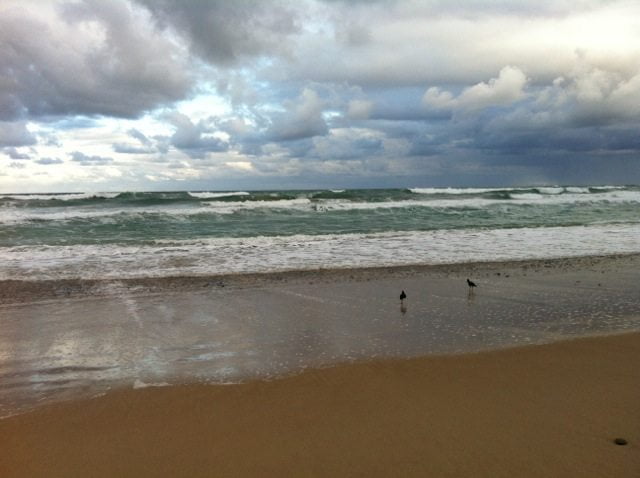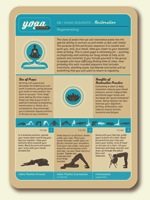
We’re so happy here at our digs on Mitchells Island! (‘We’ is Michael, Judy, Daniel and me, while Heather and Rick are in Canada.)
Since last night, it’s been raining, a gentle but steady precipitation that’s washed away weeks of accumulated dust. Eight mm of rain collection measured in our gauge and a good slug for our tank. The colour palette of our environment is bright and alive again with this welcome interval in the drought.
If you think we’re happy, you should hear the frogs bursting into vocal self-expression in our drainpipes, in the gardens, in our formerly dry wetland. They are mostly invisible but nonetheless a presence.
We are also happy today to have a rest from the backbreaking work of bush regeneration that we’ve been engaged in over many weeks. We’ve been waging war on tobacco weed, lantana, blackberry, camphor laurels and more. Armed with hand and chain saws, secateurs, and glyphosate (herbicide), we’ve been working in the early morning or evening to avoid sun and high temperatures. Even though it’s still hot and humid, the weather feels clement at the moment.
We’ve turned the corner in the week battle, and from my office view, I can see breathing space for the 313 native trees we’ve purchased from Dingo Creek Rainforest Nursery.
When I say we’ve been doing backbreaking work, it’s a slight exaggeration. In the Yoga Shed, each of us puts our disordered and sore anatomy back together with various practices of meditation, breathing, yoga asanas and something called a foam roller. The roller lets you give yourself a massage and is meant to create release in the body’s fascia tissue layer.
As part of putting my achey body back together yesterday, I did the restorative practice from one of our YogaAnywhere practice cards. I was reminded of how powerful it can be to do a series of poses designed to be regenerative. More than simply relaxing, a restorative practice will reduce your blood pressure and increase your ‘good cholesterol’ levels. Your digestion improves, lungs open up, and nervous system is soothed. In my case the practice helped reduce muscle tension and fatigue.

Here are the poses:
Adho Mukha Virasana, 1-2 minutes (Child’s Pose)
Adho Mukha Svanasana, supported, 1-2 minutes (Downward Facing Dog Pose) Kneel down in on all fours, knees under your hips. Place your hands shoulder-width apart beneath your shoulders. Tuck your toes under, raise your buttocks and straighten your arms and legs. Rest your head on a folded blanket or bolster. Breathe evenly, then exhale and come back to kneeling.
Uttanasana, supported, 1-2 minutes (Standing Forward Bend) Stand with your feet hip-width apart in front of a chair. Bend forward from your hips and place your hands, arms and head on the seat of a chair. Lift your kneecaps and thigh muscles and draw up through the pelvic floor and abdomen.
Parsvottanasana, 1 minute each side Stand facing a chair with a bolster placed on the seat. Step right foot forward, left foot back. Bend forward from your hips, keeping your legs straight and hips level. Rest your head and folded arms on the bolster. Come up and do the second side.
Prasarita Padottanasana, 2-3 minutes (Wide-leg Forward Fold Pose) Step your feet wide apart, with your feet parallel. Tighten your knees, bend forwards and place your hands on the floor in line with your shoulders. (If you can’t reach the floor, place your hands on blocks or a chair.) Keep your knees pulled up, and bring your trunk in closer to the legs.
Sirsasana, 3-5 minutes (Headstand) Be at or near a wall. Fold your hands and place them at the wall, if you are using it. Press your wrists and elbows down and lift your shoulders up. Raise your legs. After going up, keep your buttocks firm and legs together and rotated inward. When you come down, do so gradually.
Dwipada Viparita Dandasana, 3-5 minutes (Chair Backbend) Lying back over a chair, allow your shoulder blades to be supported on the edge of the chair. Hold your hands onto the seat of the chair. Let your head be supported on blankets, bolsters or blocks. Feel the opening of your chest. Gradually work to straighten your legs.
Bharadavajasana on Chair, 30-60 seconds each side (Twist) Sit sideways on a straight-backed chair, with your right hip towards the back of the chair, both feet flat on the floor. Place both hands on the back of the chair, one each side and turn your body around towards the back of the chair. Release and repeat on the other side.
Setu Bandhanda Sarvangasana on bolsters, 5 minutes (Supported Bridge Pose) Lie back over a bolster plus a folded blanket in a passive backbend. Rest your feet on another bolster. Check your shoulders are on the floor. Have your feet hip-width apart. Once settled, relax your front neck.
Sarvangasana, supported on chair, 5 minutes (Shoulderstand) Lower your back down from the seat of the chair. Your shoulders rest on a bolster and your legs elevated and straight on the back of the chair. Your hands hold the chair seat with your sacrum on the edge of the chair. Raise your legs up to a vertical position and keep them straight and toned.
Halasana, supported on chair, 5 minutes (Plough Pose) Lying down, with your shoulders supported on several blankets, and a chair behind you, swing your legs overhead and onto a bolster on the chair seat. Hold your back with both hands and let your thighs rest on the bolster. Relax your front neck.
Supta Virasana, bolster, blanket, 3-5 minutes (Reclining Hero Pose) Place a bolster and folded blanket behind you and sit between your heels in front of it. If your buttocks are not on the ground, you can sit on a block between your heels. Gradually lower down to recline on the bolster. Tuck your tailbone under and stretch it away from your lower back.
Supta Baddha Konasana, 5 minutes (Reclining Bound Angle Pose) In a reclining position, let your body release into the supporting props. Relax your diaphragm, abdomen and groins. With your eyes closed, turn your attention inward and watch your breath.
Viparita Karani, 5 – 10 minutes (Legs Up the Wall) Place a bolster and blankets parallel to the wall. Lie on your back at the wall, to one side of the bolster with your buttocks flush to the wall. Stretch your legs straight up and let the wall support them. Rest your arms alongside your body. Coming down, bend your legs and roll to one side.
Savasana, eyes covered, 5 – 10 minutes (Relaxation Pose) Lie comfortably with your head supported on a folded blanket, arms out to the side about 15 cm from your trunk. Close and relax your eyes. Go inward and observe your quiet breath.

0 Comments